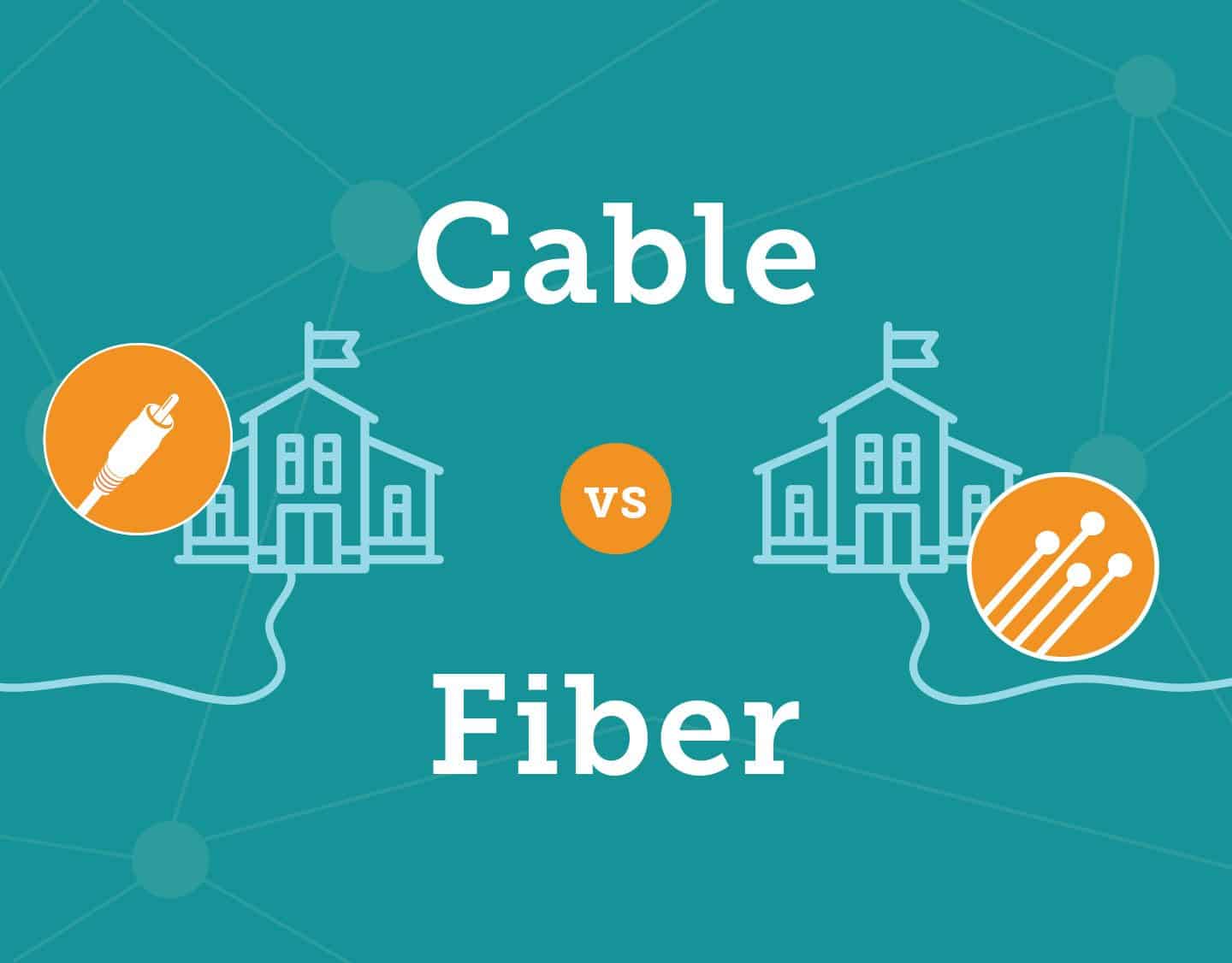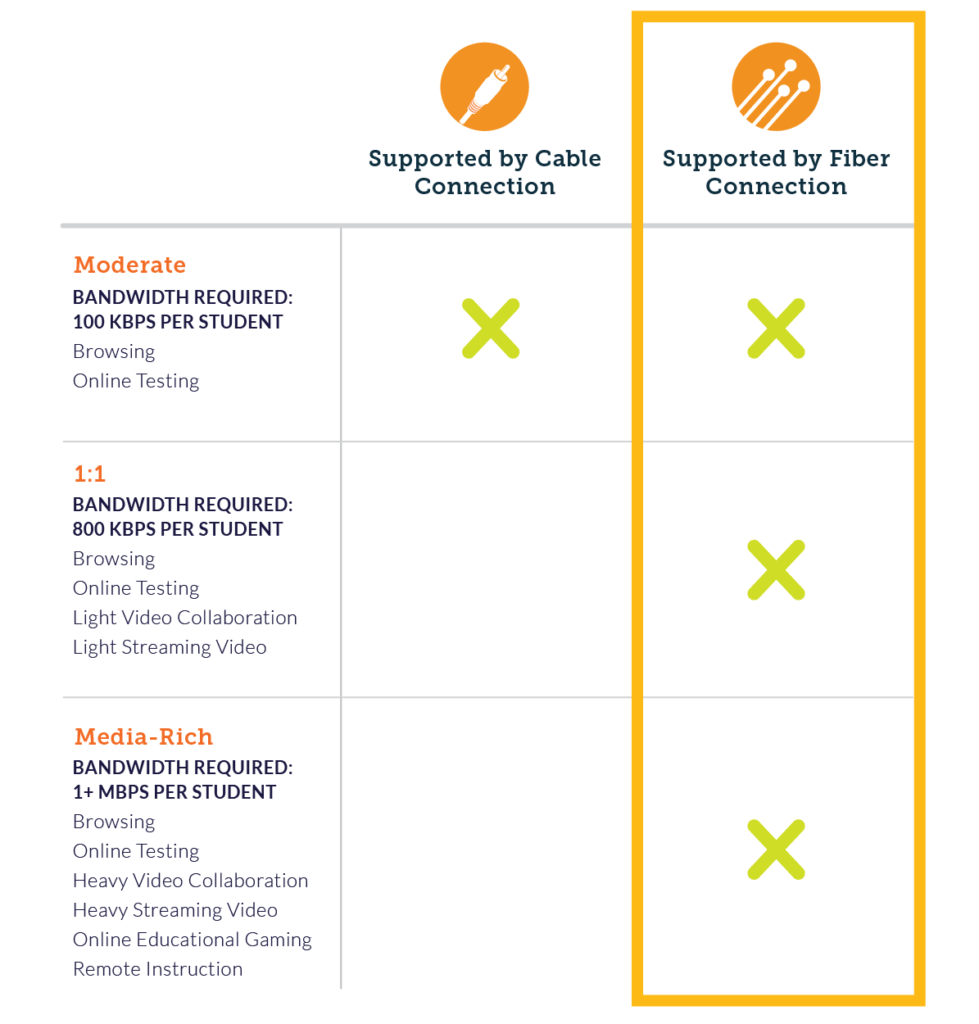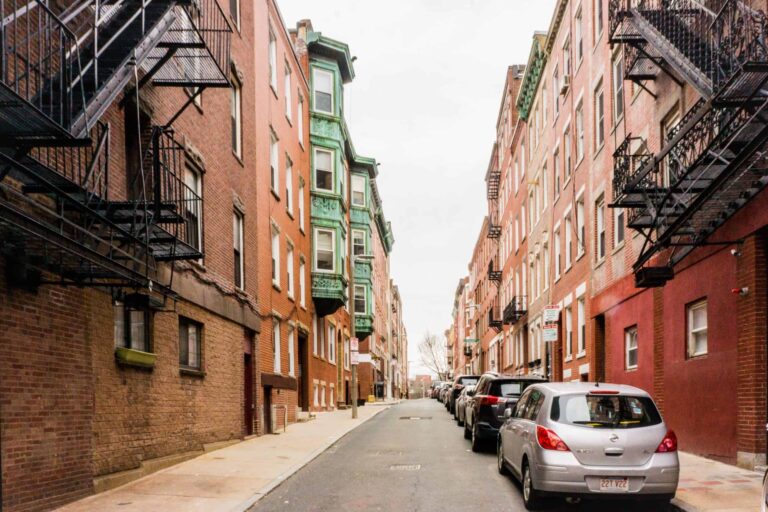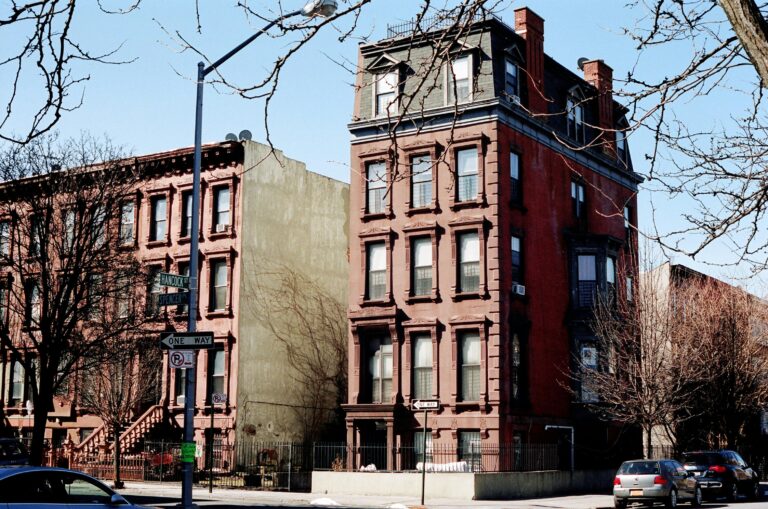How Much Bandwidth Is Needed To Support Today’s Classroom Technology?
Robust digital learning opportunities extend beyond online testing or digitized versions of textbooks. Today’s classrooms also need sufficient broadband to support activities such as:
- Online research and browsing
- Video collaboration
- Video streaming
- Online educational gaming
- Remote instruction
Any school that wants to implement a 1:1 device program in each classroom will also need enough bandwidth to power those devices reliably, so that every student can truly benefit from personalized digital learning, without the distraction of slow speeds or network interruptions.
How Can School Districts Scale for Tomorrow’s Digital Learning Needs?
While cable or fixed wireless connections may be sufficient for a small percentage of schools (particularly ones with fewer than 100 students), fiber is currently the only available technology solution that can sufficiently scale to meet most schools’ projected bandwidth needs. This is because it is the highest-capacity broadband technology available today. A single strand of fiber can transmit at more than 100 Gpbs, which gives networks greater bandwidth potential and room for growth than other connection types can manage.
What About Affordability?
A common concern is how to manage the greater upfront costs of fiber technology. Fortunately, E-rate enables schools in areas with limited service provider options and broadband resources to access affordable fiber. Under E-rate’s 2014 modernization, there is no longer a cap on the amount of funds that can be used to build fiber to these schools, and there is now up to 10% available in additional subsidies for fiber construction if those subsidies are matched by the state.
This is a game-changer for rural and small-town schools where the cost of fiber construction has made it difficult for service providers to justify the upfront investment required. It is also a tremendous opportunity for states to partner with service providers to bring high-speed connectivity to underserved communities. As a result, governors across the nation are launching statewide programs to leverage E-rate funds to bring fiber to their schools.
For School Districts Ready To Upgrade Their Networks, What’s the Next Step?
Upgrading your network takes time and careful planning; that’s why we work with school districts to provide free support in identifying their current and future bandwidth needs and in finding ways cost-effectively scale their networks.
Whether that entails switching to fiber or sticking with their existing network technology, our team is available to help ensure that your district has the infrastructure, bandwidth, and internal network capabilities necessary to support robust digital learning opportunities today and for years to come.







